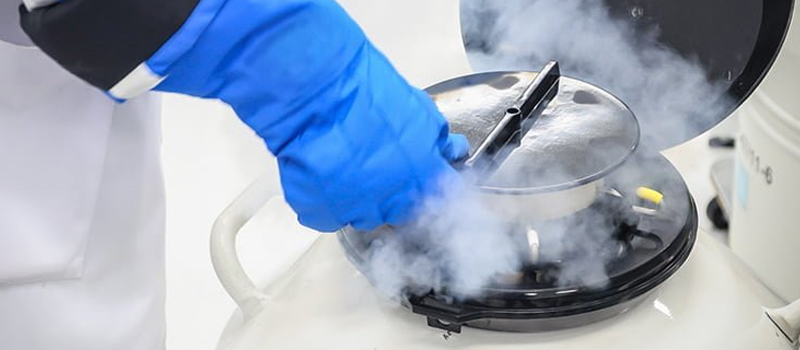A frozen embryo transfer (FET) involves the implementation of a thawed after cryofreezing embryo into a woman’s uterus.
A frozen embryo transfer (FET) involves the implementation of a thawed after cryofreezing embryo into a woman’s uterus. The woman can be a genetic mother or a surrogate mother, and in the latter case, the woman is not genetically connected to an embryo donor or her partner. According to the latest research, success rates of a frozen embryo transfer is higher than those of a fresh embryo transfer, which is one of the primary reasons why many couples chose it over possible alternatives.
Fresh Vs. Frozen Embryo Transfer
There are two main types of embryo transfers: fresh and frozen. A fresh embryo transfer is performed in the same cycle after an in vitro fertilization (IVF) procedure. There is one benefit that doctors mark about the fresh embryo transfer – it reduces the possibility of bearing twins and triplets. On the other hand, the frozen embryo transfer involves storing embryos in subzero temperatures and thawing them before fertilization. It is believed, that this process causes only the strongest embryos to survive, increasing the chances of successful pregnancy and even a healthier baby.
Reasons for Frozen Embryo Transfer
Unfortunately, it often happens that the first attempt of embryo implementation after an IVF procedure fails. A couple then has a choice either to go through the original IVF process again or use cryofrozen embryos collected and stored from the first one. It is generally advised to opt for the second alternative, as the frozen embryo transfer is both more cost-effective and guarantees higher success rates. Often the reason for FET is a health condition that prevents an embryo transfer in the same cycle or when an embryo needs to be screened for genetic diseases. But the reason could also be an optimistic one. After the first successful pregnancy, a couple may decide on the second child. In such a case, the use of preserved embryos from the first IVF process becomes the most cost-saving and effective method of extending your family.
Frozen Embryo Transfer to Surrogate Mothers
A surrogate embryo transfer procedure is the best option when a woman is unable to bear a child. The process involves careful selection and diagnosis of both natural mother and potential surrogate in order to ensure the normal development of a child without risks to the health of both embryo and surrogate mother. As the natural cycle of a surrogate mother does not concur with an IVF procedure of the patient, the frozen embryo transfer happens to be a perfect option. After the successful implementation of the embryo, the surrogate mother remains under careful medical supervision.

